How Much Does a Barbell Weight?
Author:
Reviewed by:
(Certified Nutritionist, S&C specialist, M.Sc.Eng. Biotechnology)
Unlock your full potential by engaging with our experts and community! Have questions about your fitness journey or looking for expert advice on weightlifting techniques? Don’t hesitate — leave a comment below and Ihor Shymechko will provide a personalized answer and insights to help you reach your goals.
Torokhtiy is reader-supported. Some links are affiliate links, and we may earn a commission at no extra cost to you. See our disclosure page for details.
People, who are new to weightlifting or want to acquire a barbell for their home gym, sometimes ask themselves, “How much does a barbell weigh?”
First and foremost, a barbell is a piece of exercise equipment that may be used for weightlifting and other forms of strength training. This device consists of a very long metal, usually steel, rod with sleeves for weight plates at both ends. It may be used for squatting, deadlifting, bench presses, and many other exercises, making it a very versatile piece of equipment.
A barbell’s intended purpose and usage might affect the barbell’s weight. Not every barbell will end up weighing the same. It largely depends on the type of barbell. Usually barbells weigh between 15 and 25 pounds (7-11kg), whereas Olympic barbells, used in competitive weightlifting, weigh 45 pounds (20kg). It is vital to choose a weight that is appropriate for your build and fitness goals.
I’ll be talking about the different kinds of barbells available and their typical weights, as well as guidance on choosing the right one for your needs.
How much does a barbell weigh? – How much does a barbell weigh depends on what type of barbell you are talking about and other factors such as the material used, bar diameter, bar length, knurling, and collars. An Olympic barbell, for instance, typically wights 45 lb (20kg), while a standard one will weigh anywhere from 15-25 lb (7-11kg).
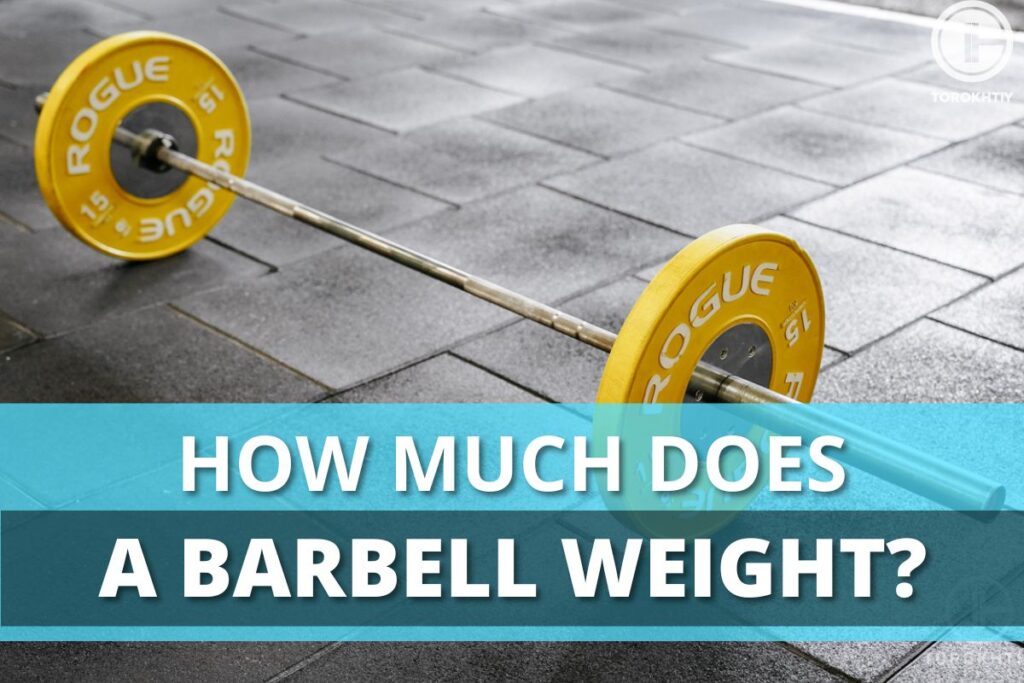
How Much Each Bar Weighs?
There are several types of barbells, and each one is built differently because of their different purposes.
1. Standard Barbells
These are the most common type of barbell and are often found in commercial gyms. The standard barbell weight is between 15-25 pounds (7-11kg) and are suitable for various exercises, including squats, deadlifts, and bench presses.
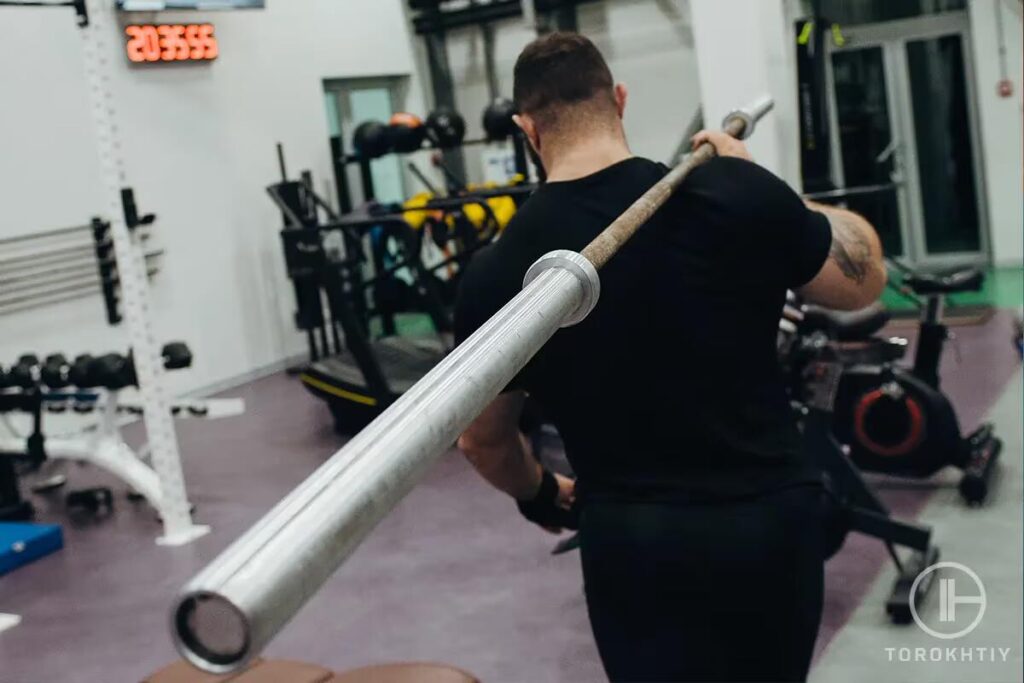
2. Olympic Barbells
These barbells are used for competitive weightlifting. Typically, the Olympic bar weight is 45 pounds (20kg). They have rotating sleeves at the ends, allowing smoother and more consistent lifting.
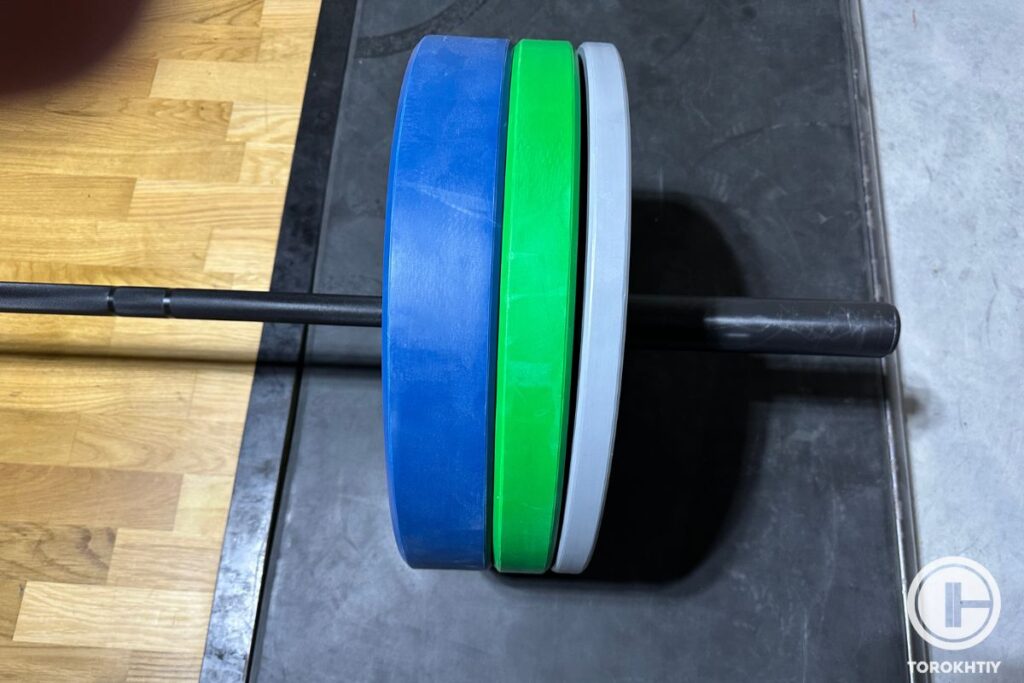
3. Powerlifting Barbells
A powerlifting barbell typically weighs around 45 lbs (20kg). Powerlifting barbells are designed to meet the requirements of powerlifting competitions and have specific characteristics to support the three main powerlifting movements: the squat, the bench press, and the deadlift.
They are made to be stiffer and have a higher tensile strength than other types of barbells to handle the heavy loads used in powerlifting.
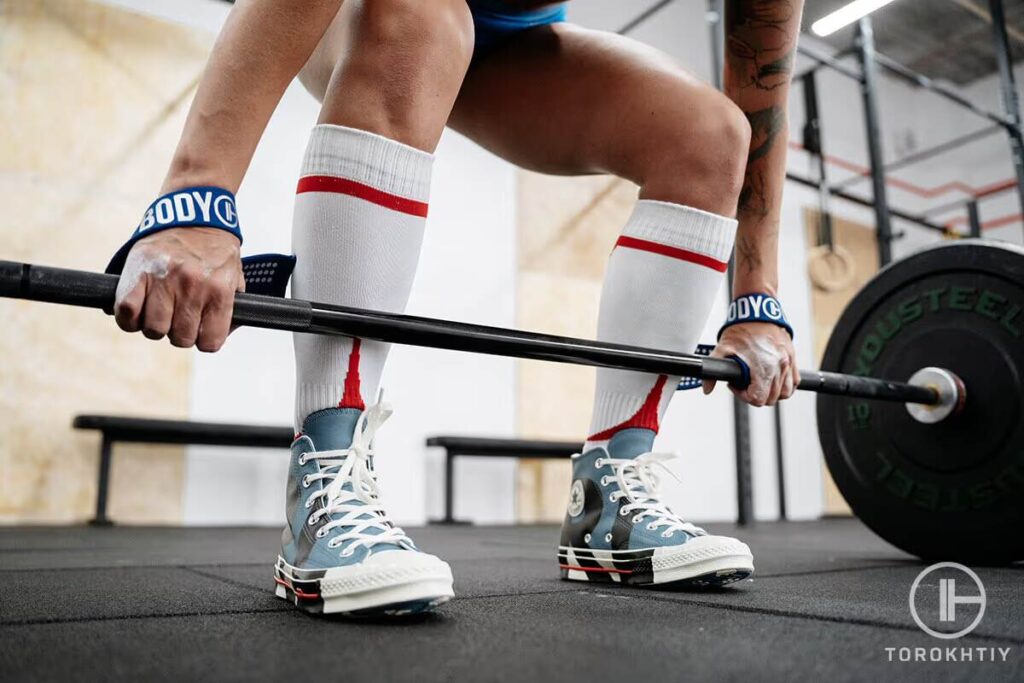
4. Cross-Training Barbells
A fitness barbell weight is between 35 and 44 lbs (16-20kg). Fitness barbells combine weightlifting, gymnastics, and high-intensity cardio with satisfying the program’s demands. Fitness barbells feature severe knurling, which aids grip.
This improves barbell control during high-intensity, fast-paced motions. Fitness barbells have greater “whip” (flexibility). This lets the bar flex slightly during explosive lifts like the clean and jerk, increasing power and velocity. Fitness barbell sleeves have bearings or bushings.
This makes Olympic-style lifts smoother and decreases bar friction. Durability is also key. Fitness barbells must be sturdy and resistant to wear and tear to endure the high-intensity, diverse motions of fitness exercises.
Some fitness barbells have even more additional characteristics that set them apart. I recommend you always check a barbell’s features and specs before buying to be sure it matches your requirements.

5. Hex Barbells
A hex barbell, also known as a trap bar, or Gerard bar by enthusiasts, typically weigh between 35 and 65 lbs (16-30kg). These barbells are designed for exercises such as deadlifts and shrugs. They have a hexagonal shape, and the weight plates are loaded in the center of the bar rather than at the ends, allowing a more natural lifting position.

6. EZ Curl Barbells
These barbells are also known as curved barbells. Curved barbell weight is anywhere between 20 and 40 lbs (9-18kg). It has a unique shape that allows for a more comfortable and natural grip during exercises such as curls and triceps extensions. They are designed to take the pressure off wrists.

7. Safety Squat Barbells
These barbells have a unique shape with padding and a wider grip to allow for a more comfortable and natural lifting position during squats. A squat safety barbell typically weighs around 60 to 75 lbs (27-34 kg).
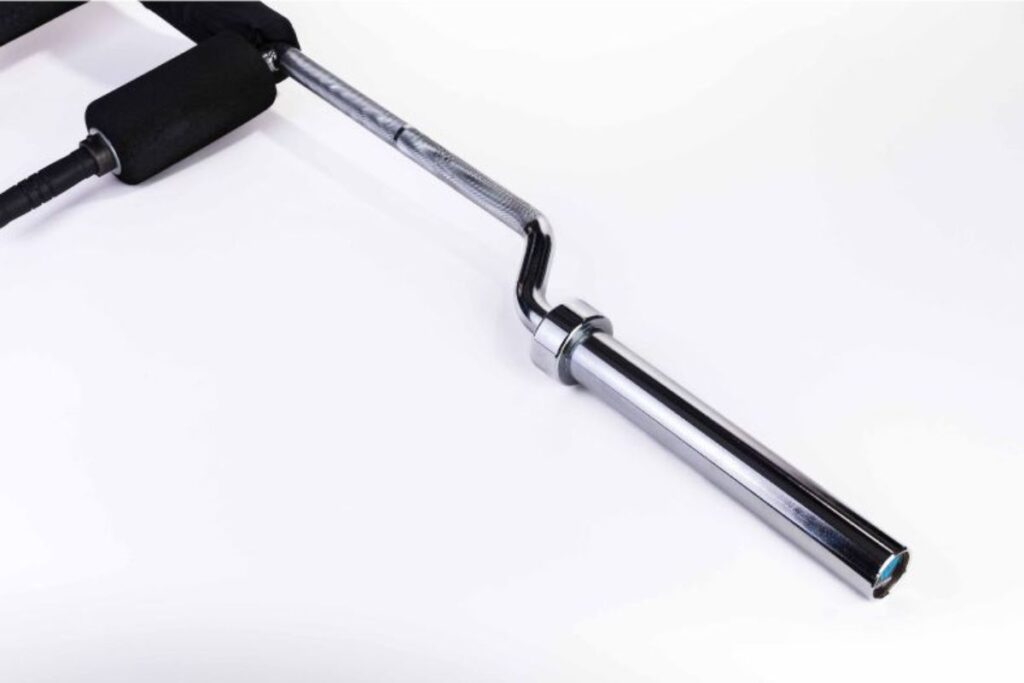
8. Women’s Barbells
A women’s barbell weight is typically around 33 lbs (15kg), and it’s designed to be slightly smaller and lighter than a men’s barbell, which usually weighs 45 lbs (20kg) to better suit the average woman’s body size and strength.
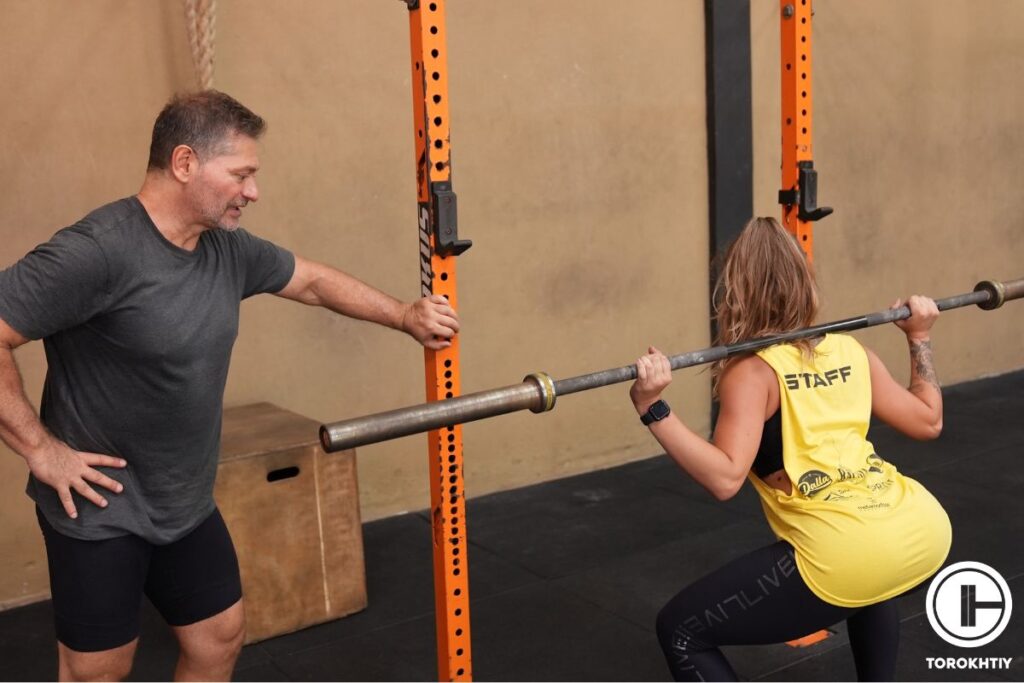
9. Swiss barbells
The Swiss barbell, also called the Multi-Grip barbell, is an uncommon piece of weightlifting equipment. Swiss barbell weight ranges anywhere from 35 to 55 pounds (16-25kg) on average. They are offered in steel as well as a mix of steel and several other materials to choose from.
The weight of a Swiss barbell may vary significantly based not only on the brand and size that are chosen, but also on the particular construction methods that are utilized throughout the manufacturing process.
They are often regarded as a fantastic alternative for those who are just beginning their weightlifting careers.
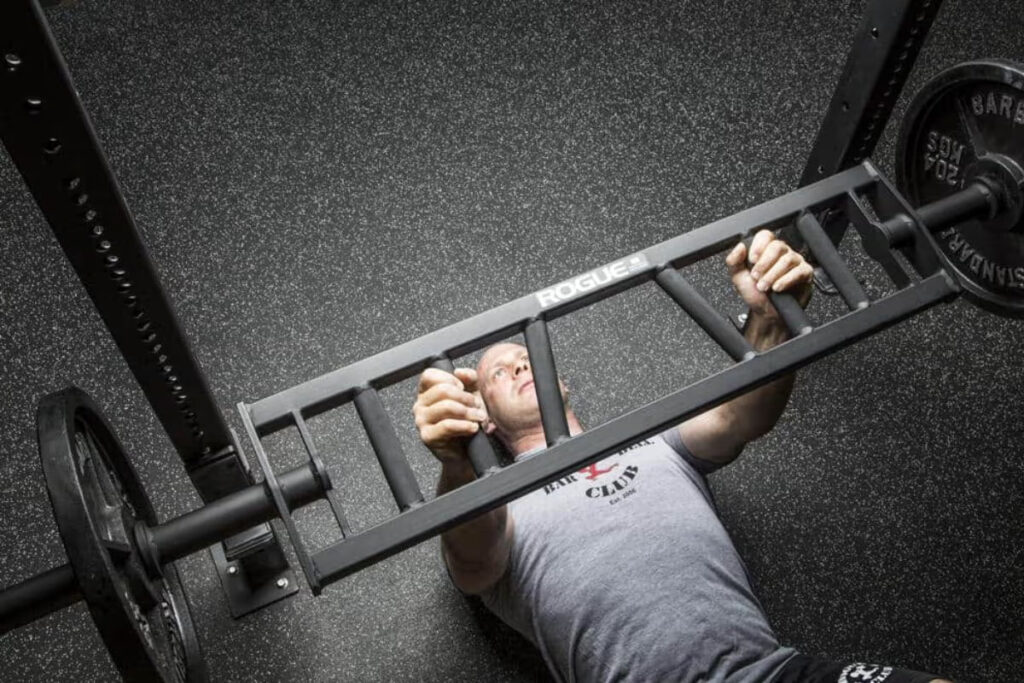
10. Log Barbells
The size and composition of the log that is utilized to make a log barbell both have an impact on the log’s potential weight. In general, the log barbell weight goes from 50 to 200 pounds (23-91 kg). There are log barbells constructed entirely out of metal, some entirely out of wood, and yet others created out of a mix of the two materials.
It is essential to be aware that the weight of a log barbell does not have a defined measurement, which means that it may change substantially across manufacturers and models.
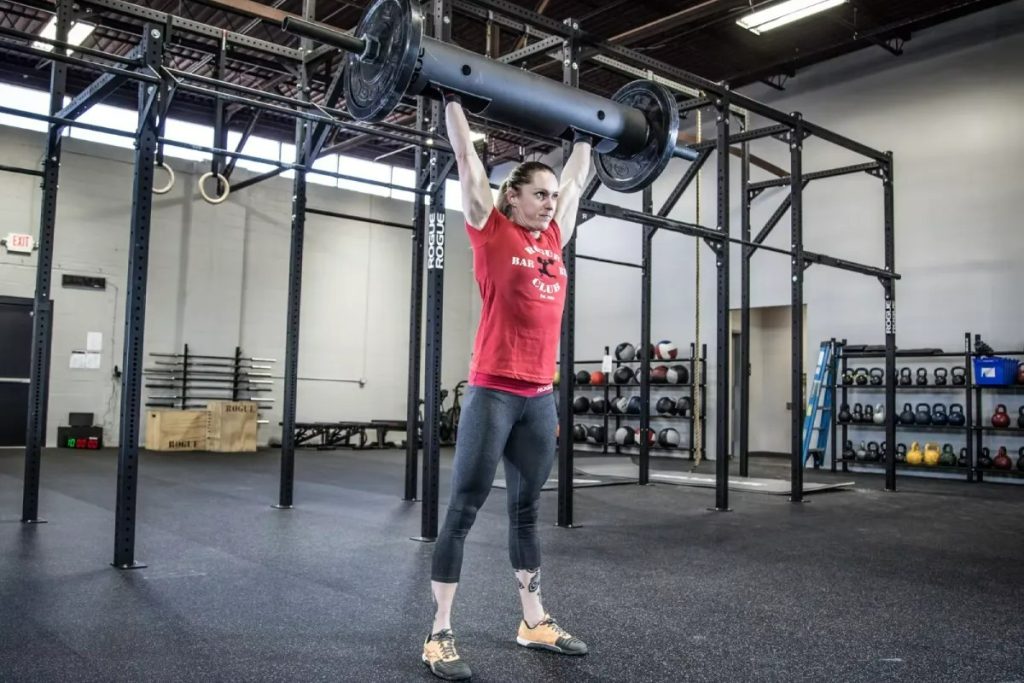
11. Short Barbells
Most often, the short barbell weight is around 35 lbs (15kg). Short barbells are purposely made to be substantially shorter than traditional barbells. Also, the diameter of short barbells tends to be less than that of longer ones.
Because of this, shorter barbells are preferred by individuals who have limited space in their homes or gym, because moving around with a 7-foot-long Olympic barbell can be awkward with limited room for movement. If you were wondering how much the small barbell weighs, well, now you have the answer.
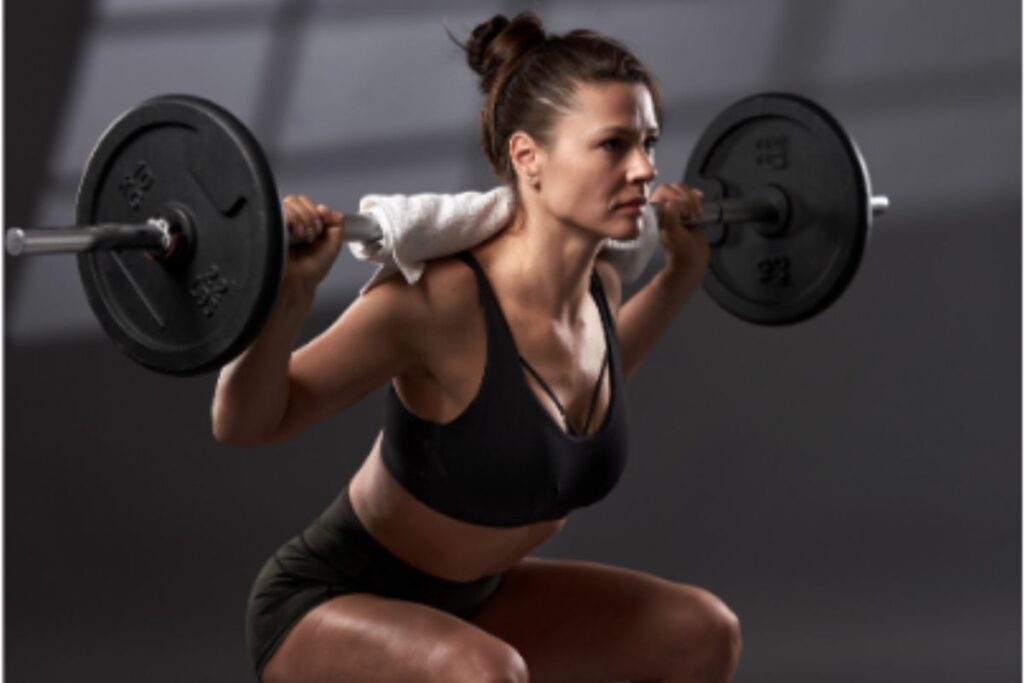
12. Triceps Barbells
They are typically shorter and have a rectangular space in the middle. They are used for exercises targeting the triceps muscle, such as extensions and close-grip bench presses. They can also be used for activities that target other muscle groups, such as the biceps and forearms.
They typically weigh between 20 and 40 pounds (9-18kg) depending on the material used and the length.
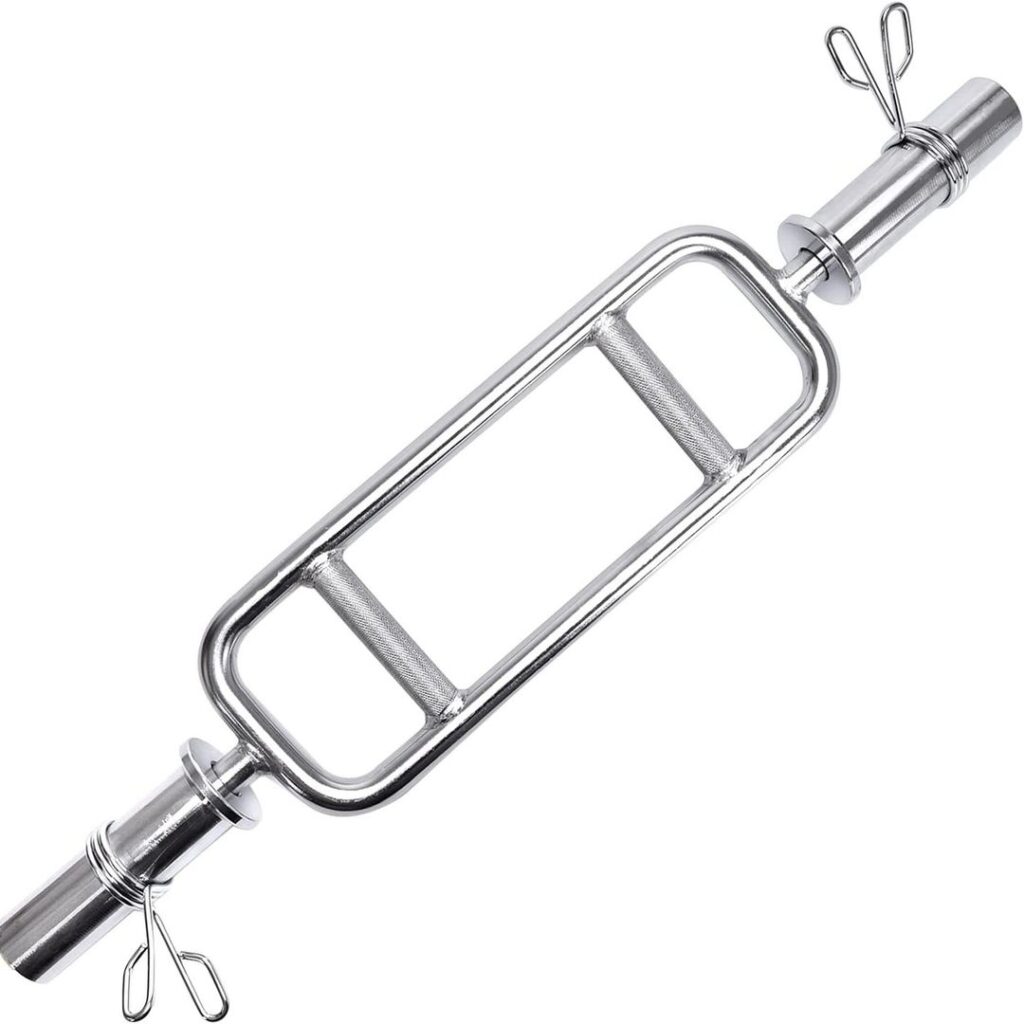
What Affects Barbell Weight?
‘How heavy is a barbell’ is determined by several factors, including:
1. Type of barbell
Several different barbells are available, including traditional barbells, Olympic barbells, and barbells explicitly designed for powerlifting. There is a possibility that the weight of each barbell at this location is unique.
In comparison, the weight of a typical average barbell weight may range anywhere from 15 to 25 pounds (7-11kg), depending on the manufacturer. The Olympic barbell standard is 45 pounds (20kg).
2. Length of the Bar
The weight of the barbell may change depending on how long it is. When comparing two barbells of the same sort and length, the longer one will have a higher weight than the shorter one.
3. Material
How much does a bar weigh could also change based on the bar’s composition in some instances. Most barbells are made of steel, making them the heaviest option compared to alternatives made of aluminum or composite materials.
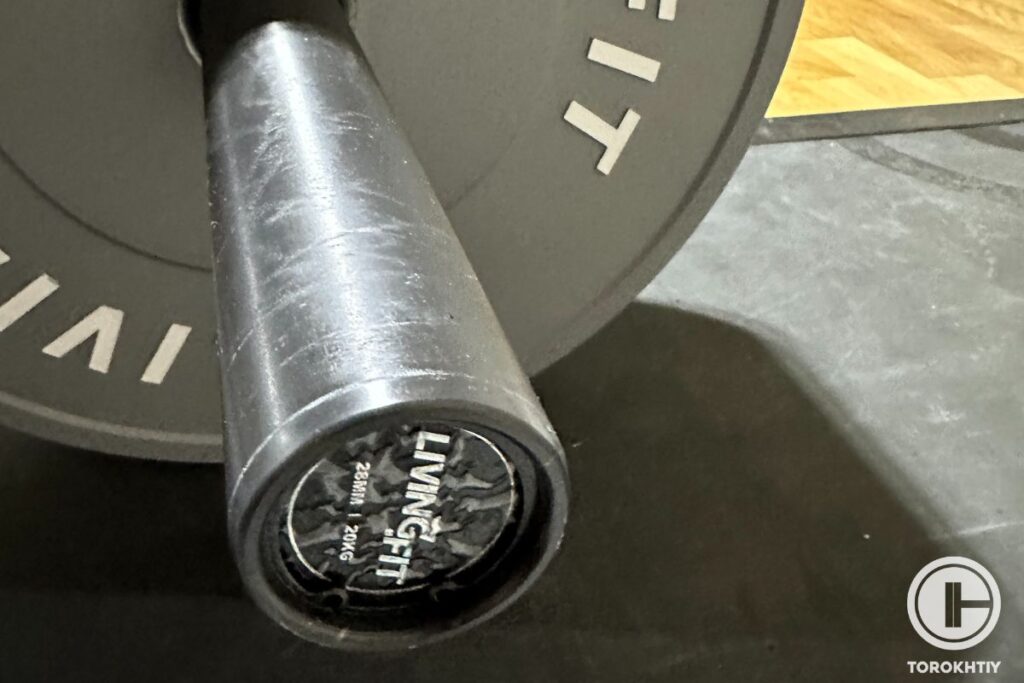
4. Diameter of the Bar
The weight of the barbell may also be affected by the diameter of the bar. A barbell of the same length and material that is thinner will weigh less than one that is thicker but of the same size.
5. Collars
Because barbell collars keep weight plates in place, their weight might also play a part in the equation. Some barbell collars are constructed out of metal, which may cause the barbell to seem heavier than it really is.
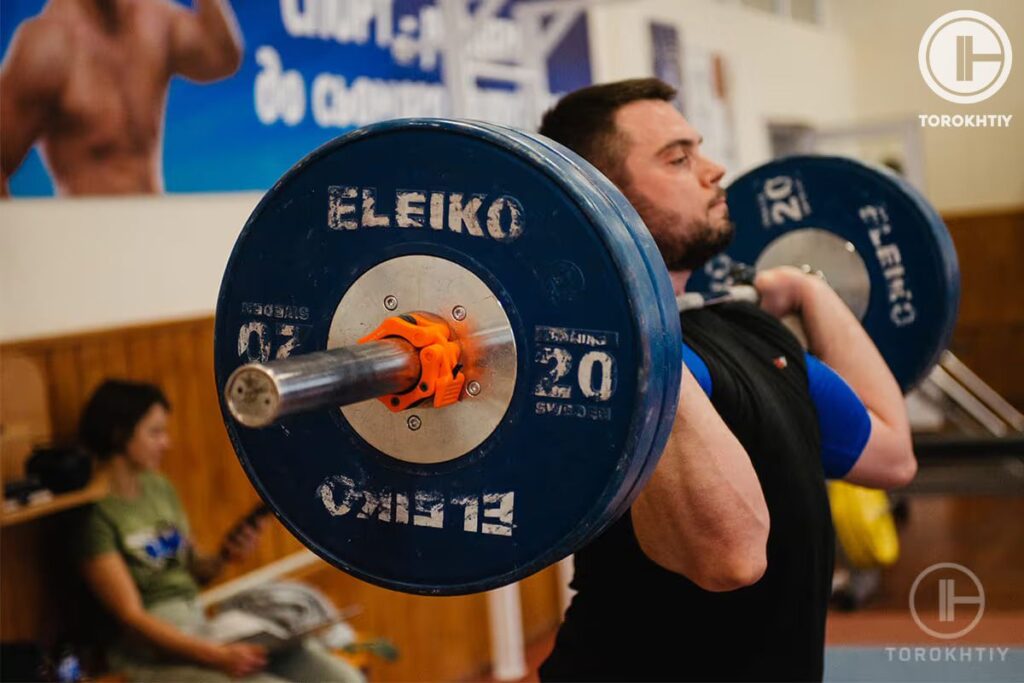
When selecting a barbell, it is necessary to consider these criteria, since choosing the appropriate weight is critical for your safety and fitness objectives.
CAP Barbell The Beast
The CAP Barbell The Beast is a heavy-duty barbell designed for severe weight and powerlifters.
This barbell is one of the most sturdy and robust available for the price you pay; it is constructed from high-quality steel and can support a total of 1500 pounds (680kg), which can cover most exercises depending on why you’re buying it. It’s incredibly versatile.
One of the most defining features of The Best is its knurling. The aggressive and deep knurling provides a secure grip, making it much easier and safer to work with more weights. With the 7.75 inches of knurling on each side, you can find the perfect grip length that works for you.
The barbell has a black oxide coating that gives it a modern look and protects it from rust. It peels off quickly, and I find this to be its biggest flaw. But this is primarily aesthetics, so if you can look past that, you’ve got a fantastic barbell with various exercises.
In addition, the Beast’s dual-snap ring design keeps plates securely in place throughout your workouts. You can also spin around in circles. The greater the number of plates on it, the better it spins. A couple drops of oil on the sleeves should fix the spin issue.
The barbell’s 28.5 mm diameter shaft is designed for Olympic lifting routines. The barbell’s tensile strength of 110,000 PSI is higher than that of most of its competitors.
In addition, most Olympic weight plates should fit on the Beast, making it easy to adjust the heaviness of the machine as needed. This barbell is built to endure and has a one-year warranty to back up its durability claims.
This barbell’s worthy of the dedication of professional weightlifters, powerlifters, and beginners alike. CAP Barbell The Beast is great for heavy lifting because of its strong, centered knurling, dual-snap ring design, and black oxide finish. A versatile and trustworthy alternative for any weightlifter thanks to the barbell’s tensile strength and compatibility with most Olympic weight plates.
Positives:
Could be better:
FAQ
Are All Barbells 45 Pounds (20KG)?
No, not all barbells are 45 pounds (20kg). Olympic barbells, used for competitive weightlifting, typically weigh 45 pounds (20kg), and most of the barbells you will find on squat racks in functional fitness, but other types of barbells can have different weights.
Standard barbells, for example, usually weigh between 15-25 pounds (7-11kg), and some barbells can be even lighter or heavier than that, depending on the intended use or specific design.
Are Olympic Barbells Heavier Than All Others?
The normal weight of an Olympic barbell is 45 pounds (20kg), making it much heavier than other types of barbells. For example, the weight of a standard barbell typically ranges from 15 to 25 pounds (7-11kg).
However, not all barbells are created equal. Some heavy-duty barbells might weigh even more than 45 pounds (20kg), whilst other kinds of barbells, such as ez curl barbells, and even cross-training barbells, can weigh less than 45 pounds (20kg).
Is Barbell Heavier Than Dumbbell?
Now when you know how much the bar can weigh to answer the question you will just need to know the weight of the dumbbell. Most common barbell you will find nowadays in the gym’s squat rack will most likely be a 45lbs (20kg) olympic bar. Compare that to the weight of your DB and you will know.
Conclusion
In conclusion, the weight of a barbell can vary depending on the type of barbell and its intended use.
It’s essential to choose the right weight for your fitness level and goals and the type of exercises you plan to perform with the barbell. Remember that many barbells can be adjusted by adding or removing weight plates, so you can customize the weight to suit your needs.
CAP The Beast Barbell is my recommendation for picking the suitable barbell. A great barbell will give you the most bang for your buck. You will find it gives you excellent results and the most comfort during a workout.
If you have already used The Beast barbell from CAP or have just now decided to buy it, please share your thoughts and impressions via the comment section below. I would be delighted if you would share your experience and tell me what you think of this one.
I would be glad to hear your opinion on the differences that you have experienced!
Also Read:
- Types Of Weight Plates
- Safety Squat Bar Guide
- How Much Does A Barbell Cost
- Types Of Barbells
- Best Barbell Clamps
- Creatine For Women
- What Is An Ez Bar
- Safety Squat Bar Guide
References:
- Barbell // Wikipedia: https://en.wikipedia.org/wiki/Barbell
- Olympic Barbells vs. Standard Barbells: What’s The Difference? // Active: https://www.active.com/fitness/articles/olympic-barbells-vs-standard-barbells
- Dumbbell // Wikipedia: https://en.wikipedia.org/wiki/Dumbbell
- Photos by Torokhtiy Media Team; lunamarina, Canva.com; Reshetnikov_art, Canva.com; Matic Grmek, Canva.com; Victor Freitas, Pexels; Slatan, Canva.com;
Why Trust Us?
With over 20 years in Olympic weightlifting, strength training, nutrition coaching, and general fitness our team does its best to provide the audience with ultimate support and meet the needs and requirements of advanced athletes and professional lifters, as well as people who strive to open new opportunities and develop their physical capabilities with us.
By trusting the recommendations of our certified experts in coaching, nutrition, and sports training programming, as well as scientific consultants, and physiotherapists, we provide you with thorough, well-considered, and scientifically proven content. All the information given in the articles concerning workout programming, separate exercises, and athletic performance, in general, is based on verified data.
The product testing process is described in more detail here.
Author: Ihor Shymechko
Pro Olympic Weightlifter, Coach
Best Results: Snatch – 208 kg,
C&J – 240 kg
Ihor has been a professional weightlifter since 1996, boasting over two decades of competition experience. His notable achievements include clinching the European Championship in 2009 and securing a silver medal in the 105kg division at the Senior World Championships in 2011. Ihor represented his country in the 2008, 2012, and 2016 Summer Olympics. After retiring from competitive weightlifting, he transitioned to coaching, leveraging his vast experience to guide athletes who now compete on both national and international stages.
Reviewed by: Jacek Szymanowski
Certified Nutritionist,
M.Sc.Eng. Biotechnology
Performance architect,
Strength and Conditioning Specialist
With over 30 years of fighting experience, specialization in nutrition coaching for athletes, and expertise in metabolic health and dietary strategies, Jacek offers a comprehensive approach to optimizing your performance and well-being. Backed by a Master of Science degree in Biotechnology, Jacek remains at the forefront of scientific advancements, ensuring that his coaching is always evidence-based and up-to-date.





Still have questions after reading our article? Unlock your full potential by engaging with our experts and community! Don’t hesitate — leave a comment below and Ihor Shymechko will provide a personalized answer and insights to help you reach your goals.